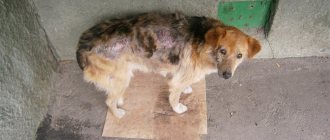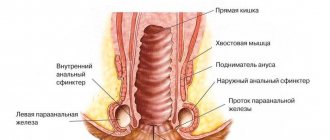The formation of stones in the urinary tract is possible in dogs of different breeds and of any age, but older animals suffering from metabolic disorders are most susceptible to the disease. Just like in humans, this disease can have various causes in dogs.
Stone formation in the urinary tract, or urolithiasis, has some peculiarities in dogs. Unlike humans, dogs are more likely to develop calculi (stones) in the bladder or ureters than in the kidneys. Kidney damage occurs in about 10% of all cases. The remaining number of diseases is dominated by stones in the bladder and urethra (urethra).
Causes of the disease
There are several types of stones that occur as a result of urolithiasis in dogs:
- Struvite. They are the most common - up to 70% of cases.
- Oxalates - up to 20% of diseases. This type of stone is considered one of the most dangerous, since even ultrasound and laser can’t handle them well.
- Urats. These stones are less common than others.
- Cystines.
- Xanthines.
- Concretions of mixed type.
The reasons why urolithiasis appears are diverse and are divided into external and internal. External reasons are related to the animal’s nutrition: the composition of the water that is given to the dog, the level of its mineralization, food, its composition, the level of salinity, the predominance of protein, and so on.
Internal causes are disruptions in the normal functioning of the organs and systems of the dog’s body, that is, metabolic disorders, inflammatory processes in the genitourinary tract, genetic pathologies, problems with the functions of the parathyroid glands and other hormonal disorders, portacaval shunt, and so on.
The development of stone formation in a dog can be caused by the owner’s neglect of the animal’s needs, for example, an insufficient amount of water, due to which the animal suffers from dehydration, regular bladder overflow due to untimely walking of the dog, kidney disease that occurs due to hypothermia if the pet sleeps on cold floor, in drafts, in an uninsulated booth outside the house.
Short-haired animals and “hairless” dogs should be walked in cold weather wearing special warm blankets or overalls to protect their kidneys. Any cold can cause kidney dysfunction, and this already becomes a reason for the development of inflammation and the beginning of the formation of stones.
How did my dog get these stones?
Normal dog urine is slightly acidic and contains waste products, including dissolved mineral salts and other compounds. Struvite is a common component of dog urine and remains dissolved as long as the urine is acidic and not too concentrated. If urine becomes extremely concentrated or alkaline (as opposed to acidic), struvite crystals precipitate or fall out of solution.
In dogs, struvite bladder stones usually form as a complication of a bladder infection caused by bacteria that produce an enzyme known as urease. This enzyme breaks down urea, which is normally present in urine, causing excess ammonia production; this ammonia production causes the urine to become alkaline. Ammonia in urine also causes inflammation of the bladder. Under these environmental conditions, struvite crystals will precipitate out of solution and collect around any cells or debris that may have formed in the bladder as a result of inflammation. Female dogs tend to get these types of bladder infections and stones much more often than males, probably because they have a shorter, wider urethra (the tube that carries urine from the bladder to the outside). In some studies, up to 85% of dogs with struvite bladder stones were female.
Other causes of alkaline urine, such as certain kidney diseases, long-term use of diuretics or antacids, and other conditions that cause elevated urine pH or elevated levels of phosphorus or ammonia in the urine, can also predispose a dog to developing struvite bladder stones.
© shutterstock
Which breeds are more susceptible
Different breeds tend to develop different types of urinary stones:
- Struvite stones, while most common, occur in middle-aged dogs (4–6 years old). Miniature schnauzers, beagles, Scotch terriers, dachshunds, poodles and Pekingese are more susceptible to the formation of this type of stones. It is interesting that stones of this type occur more often in females than in males, they are accompanied by infection, and the urine has an alkaline reaction.
- Oxalate stones are more likely to form in older dogs - 7-8 years old, more often in males than in females. The most susceptible are miniature schnauzers, Yorkshire terriers, “chrysanthemum dogs” Shih Tzu, and Lhasa Apso. The inflammatory process is rare, the urine reaction is acidic.
- Urate stones most often plague Dalmatians suffering from a genetic disorder of purine metabolism. Young animals get sick, but in principle they can be of any age. Young dogs with portal blood flow disorders - miniature schnauzers, Irish wolfhounds, Yorkshire terriers, Maltese dogs, Australian shepherds and Cairn terriers - under 12 months of age are also prone to urate formation. Males with acidic urine are more susceptible to the disease.
- Cystine stones occur with cystinuria; stone formation is not always observed; males aged 1.5 to 5 years are affected. At risk are Chihuahuas, English bulldogs, Irish terriers, dachshunds, and Yorkshire terriers. The urine reaction is most often acidic.
It cannot be said that there are dog breeds that are not prone to developing urolithiasis. It can appear in certain circumstances in dogs of any breed and age.
Main symptoms
The most common signs of the disease include the following:
- Frequent urination. The dog not only begins to ask to go out very often, but can also “make a puddle,” even if this is an adult animal and nothing like this has ever been noticed before.
- Pain during urine excretion. The dog squeals and whines while urinating, after which it takes a long time to come to his senses, does not want to play, run, tries to lie down and even hide away from people.
- The appearance of traces of blood, sand or pus in the urine if the disease is accompanied by an acute inflammatory process.
- Obstruction of the urinary tract, which can lead to intoxication and kidney failure.
- Signs of hepatic encephalopathy in dogs with portacaval shunts.
- The animal reacts painfully to touching the kidney part of the back and the lower half of the abdomen. In an acute condition, it can growl and can even bite the owner if he accidentally causes pain.
If the stones are in the kidneys or at the top of the ureters without blocking them, they can go undetected for a long time. The disease does not show itself in any way, and at this time chronic renal failure develops in dogs.
How do the symptoms of urolithiasis manifest?
The most common signs that a dog has bladder stones are:
- hematuria (blood in the urine);
- dysuria (straining when urinating).
Hematuria occurs because mineral crystals rub against the wall of the bladder. At the same time, they irritate it and cause damage that begins to bleed. Dysuria occurs due to swelling of the walls of the bladder or urethra.
If treatment is not started, the disease progresses and causes a number of complications:
- If there is a crystal in the path of urine, it will make urination difficult. Presumably, the dog experiences pain, just like a person.
- Large stones act like a valve, causing partial or complete blockage of the duct. Small ones come out along with urine. But they can also get stuck in the urethra. If a complete blockage occurs, the animal will not be able to defecate, which will lead to a rupture of the bladder. This situation is life-threatening and requires immediate surgical intervention. After this, the dog can live no more than 72 hours if it does not receive help.
- If urine stagnates in the bladder, intoxication occurs and inflammation develops, affecting the ureters and kidneys.
Important! Oxalates
-
This is a natural component of many products.
They combine with calcium during digestion, but only if there was too little liquid in the food. Therefore, it is not advisable to give dry food to a dog prone to stone formation. They need to be moisturized. Some stones can be palpated through the stomach wall. But this is not a mandatory sign of urolithiasis. Sometimes the crystals are too small, and sometimes inflammation and swelling of the wall do not allow them to be felt. In general, the symptoms of urolithiasis are largely reminiscent of cystitis. Therefore, to confirm the presence of mineral formations, a more detailed examination of the animal is necessary.
Diagnostics in a veterinary clinic
If a dog shows signs of urolithiasis, or there is a suspicion of it, it is necessary to undergo the following examinations and tests at a veterinary clinic:
- Ultrasound of the abdominal cavity.
- Radiography to identify stones with radiopaque capabilities.
- Excretory urography or cystography with double contrast if there is uncertainty when making a diagnosis.
- General and biochemical blood test.
- General urine analysis.
- Bacterial culture of urine.
After removing the stones, it is necessary to examine them.
Signs of ICD
For a long time, ICD does not show signs, i.e. proceeds latently. In most cases, owners notice that not everything is all right with their pet when the pathology has already progressed to its full extent.
X-ray for urolithiasis
Symptoms of urolithiasis in dogs often mask other types of pathologies of the urinary system, in particular cystitis. You should immediately contact a veterinary clinic for examination if you have the following signs:
- frequent urge to defecate;
- relieving yourself in the wrong place;
- presence of blood in the urine;
- restless behavior of the pet;
- tight, painful stomach.
The dog may ask to go to the toilet every half hour or more often. However, when trying to perform the act of urination, urine is released in a meager volume or completely absent.
Anuria is a signal of a blockage in the urinary tract, which requires emergency veterinary care for your dog.
Treatment method and prognosis
The method of treating the disease depends on the condition of the animal and whether there is strangulation of the ureter or urethra by stones. If possible, the veterinarian chooses drug therapy. For this purpose, drugs and manipulations are used to crush and dissolve stones, as well as anti-inflammatory and painkillers, and other medications necessary to treat the disease and eliminate symptoms.
The stone stuck in the urethra is pushed back into the bladder, catheterization is performed with a special thin catheter, urethrotomy (dissection of the urethra to remove the stone) or urethrostomy (formation of a stoma from a wide part of the urethra, that is, removal of the urethra into the perineum between the scrotum and anus).
Stones returned from the urethra to the bladder or formed in it from the ureter are removed surgically using cystostomy, that is, opening the bladder.
Oxalate stones require a special approach. They are not dissolved by special preparations and influences, and they also have a special structure. If they form in the kidneys, they take the shape of the renal pelvis and can completely block the organ, which leads to its death. This threatens not only the health, but also the life of the dog.
Treatment of urolithiasis in dogs: methods
Therapy for urolithiasis largely depends on the type of stones, as well as the general condition of the pet.
If urolithiasis is complicated by obstruction, the veterinarian urgently performs one of the following procedures:
- caterization;
- retrograde urohydropropulsion;
- urethrostomy.
The purpose of catheterization is the outflow of urine from the bladder. Retrograde urohydropropulsion allows the stone to be pushed from the urethra back into the bladder.
Urethrostomy is an operation in which an additional opening is created for unimpeded urination.
In the presence of soluble types of stones and the absence of urinary tract obstruction, dogs are prescribed conservative treatment. Urate, struvite and cystine deposits, if they are small in size, dissolve under the influence of drugs and dietary feeds. Oxalate stones can only be removed surgically.
Drug therapy
The approach to treating urolithiasis in dogs should be comprehensive. Therapy is primarily aimed at:
- dissolving or removing stones;
- relief of the inflammatory process;
- elimination of pain and spasms.
The animal is prescribed a course of treatment with antibiotics or antimicrobial medications, as well as drugs with stone-dissolving, anti-inflammatory, diuretic and analgesic properties.
Antibacterial therapy is indicated for urolithiasis caused by a urinary tract infection (UTI). Which antibiotic will be prescribed depends on the type of pathogen.
To relieve spasms, the pet is prescribed No-Shpa, papaverine, and to relieve pain - Analgin, Baralgin, etc.
If there is blood in the urine, a hemostatic agent (Dicynon) is additionally prescribed.
As the main treatment for urolithiasis, the veterinarian prescribes complex herbal remedies that dissolve stones, relieve inflammation, have a diuretic effect, relieve pain and serve as a kind of relapse prevention. Such medicines include:
- Urolex;
- Stop Cystitis;
- Cantaren;
- Urolex;
- Phytoelite Healthy kidneys;
- Urinari Tract Support;
- Cyston (human).
The duration and regimen of medications is determined by the veterinarian.
Diet therapy
When diagnosing urolithiasis, you should not try to adjust the dog’s diet with natural food. During the treatment period, veterinarians recommend switching the dog to a special diet of commercial food. For medicinal purposes the following is prescribed:
- Royal Canin Urinary S/O;
- Hill`s Urinary Care S/D;
- Advance Urinary;
- Happy Dog struvit;
- Proplan Urinary.
Royal Canin Urinary S/O dissolves stones and struvite-type crystals and is a prophylactic against oxalates.
Hill`s Urinary Care S/D and Happy Dog struvit are prescribed for tripel phosphates and other types of soluble salt crystals.
Advance Urinary Proplan Urinary dissolves struvite, but at the same time is not recommended for animals that have been diagnosed with oxolate urolithiasis in the past or are susceptible to it.
For oxolate-type urolithiasis, a therapeutic diet aimed at reducing the formation of deposits is also indicated. After surgery, such foods serve to prevent relapses.
For oxolates, as well as cystine and urate uroliths, Hill's Prescription Diet u/d Dog is prescribed.
The therapeutic diet, as well as medications, should be selected by the attending veterinarian.
Physiotherapy
One of the safest and most effective procedures that does not require surgery to eliminate stones in urolithiasis is pulsed magnetic therapy. Physiotherapy additionally has an anti-inflammatory, decongestant and analgesic effect.
Surgical intervention
Urethrostomy for urolithiasis is indicated in cases of urethral blockage in male dogs of a recurrent nature or the presence of a large number of stones in the bladder.
During surgical procedures, the doctor creates a new urethral opening - a urethrostomy.
During the operation, it is recommended to additionally perform castration. If you refuse to remove the reproductive organs, there is a risk of the urethrostomy becoming overgrown.
Cystotomy is an operation indicated for the formation of large stones or small stones in abnormal quantities.
The doctor cuts the bladder, removes urolates and rinses the organ to remove sand. A couple of days after this operation, the dog regains normal urination.
If stone deposits are detected in the renal pelvis, the affected kidney is removed (nephrectomy), provided that the paired organ is completely healthy.
What to do at home
Treatment of urolithiasis is long and quite complex. If an animal is scheduled for surgery, it will be under observation in the clinic for the first time. When the veterinarians are sure that everything is fine with the dog, she will be released home. At home, the animal is provided with complete rest, warmth, proper nutrition, following a special diet prescribed by a veterinarian for a specific type of stone.
If there is an inflammatory process or in the postoperative period, the dog is prescribed a course of antibiotic therapy. Treatment of the disease is long-term, up to several months, and in case of chronic urolithiasis with kidney damage - lifelong.
After bougienage, ultrasonic crushing of stones or surgery, the animal must be regularly brought for checks to the veterinary clinic in order to ensure positive results of treatment and prevent relapse of the disease.
At home, the most important thing for a dog is diet and sufficient, but not excessive, clean drinking water, as well as protection from hypothermia and infections.
If struvite is present, diets restricting protein, calcium, magnesium and phosphorus are used. With urates, the amount of proteins and purines in food is reduced. Cystine stones also reduce the volume of proteins. Oxalate stones require the elimination of hypercalcemia if the veterinarian has concluded that such a problem exists.
Possible complications
The presence of urolithiasis threatens with various complications depending on where the stones are located. If stones block the ureter or urethra, this leads to an acute attack with severe pain. If the stone has sharp edges, it may damage the walls of the urethra or ureter. In this case, only urgent hospitalization and surgical intervention can save the animal’s life.
Kidney stones are a potential threat for the development of many diseases: from chronic renal failure, nephritis and pyelonephritis, inflammation of the renal pelvis to complete kidney failure.
If an infection is associated with urolithiasis, it can spread through the bloodstream throughout the dog’s body and cause serious harm to the health of many organs, including the heart. If the course of the disease is extremely unfavorable, the dog is at risk of sepsis - a general blood infection.











